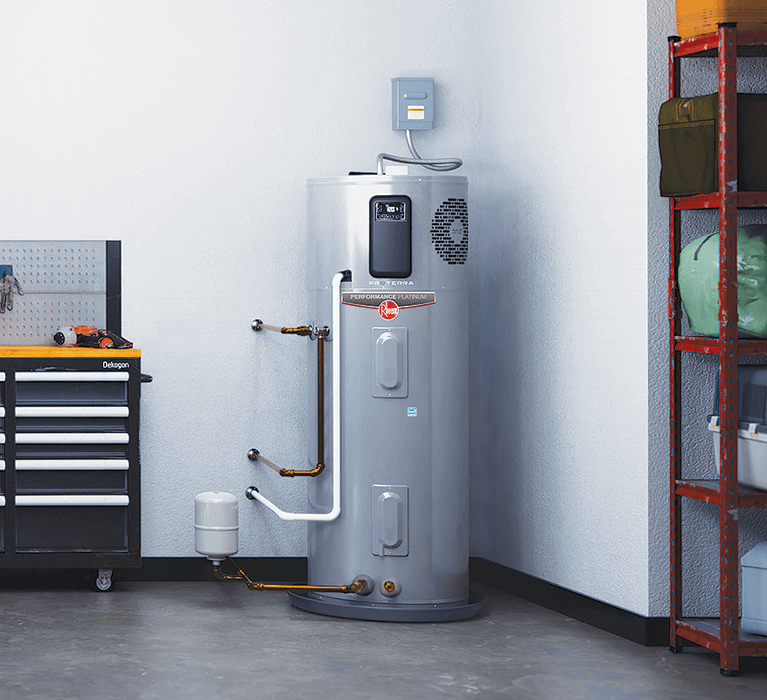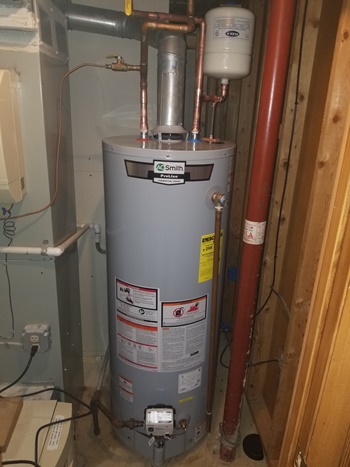Efficient Techniques for Caring for Your Home's Hot Water SystemExpert Guidance on Caring for Your Home's Hot Water System
Efficient Techniques for Caring for Your Home's Hot Water SystemExpert Guidance on Caring for Your Home's Hot Water System
Blog Article
How do you actually feel on the subject of What Kind of Maintenance Do Water Heaters Need??

Hot water is essential for everyday convenience, whether it's for a refreshing shower or cleaning meals. To ensure your warm water system runs effectively and lasts longer, normal upkeep is crucial. This post provides useful pointers and insights on just how to preserve your home's hot water system to stay clear of disturbances and expensive repairs.
Intro
Maintaining your home's warm water system might appear challenging, but with a few basic steps, you can guarantee it operates efficiently for years ahead. This guide covers every little thing from comprehending your hot water system to do it yourself maintenance pointers and knowing when to call professional assistance.
Relevance of Maintaining Your Warm Water System
Routine upkeep not only extends the life-span of your hot water system yet likewise guarantees it runs efficiently. Ignoring upkeep can lead to reduced performance, higher energy expenses, and even early failing of the system.
Signs Your Warm Water System Needs Maintenance
Knowing when your warm water system requires focus can avoid major concerns. Keep an eye out for signs such as inconsistent water temperature level, unusual noises from the heating unit, or rustic water.
Understanding Your Hot Water System
Before diving right into maintenance tasks, it's valuable to recognize the basic components of your hot water system. Usually, this consists of the water heater itself, pipelines, anode poles, and temperature controls.
Monthly Maintenance Tasks
Regular month-to-month checks can help catch small problems prior to they escalate.
Flushing the Water Heater
Purging your hot water heater removes sediment accumulation, enhancing performance and prolonging its life.
Monitoring and Replacing Anode Rods
Anode rods avoid deterioration inside the container. Inspecting and replacing them when worn is critical.
Inspecting and Adjusting Temperature Settings
Changing the temperature level setups makes sure optimum efficiency and safety and security.
DIY Tips for Maintenance
You can perform a number of upkeep jobs on your own to maintain your warm water system in leading problem.
Looking for Leakages
Consistently evaluate pipes and connections for leaks, as these can lead to water damages and greater bills.
Evaluating Stress Alleviation Valves
Testing the stress safety valve ensures it works properly and stops extreme stress accumulation.
Protecting Pipelines
Protecting hot water pipes reduces heat loss and can save energy.
When to Call a Professional
While do it yourself upkeep is valuable, some concerns need expert competence.
Complex Issues Requiring Specialist Aid
Instances include major leakages, electrical troubles, or if your hot water heater is constantly underperforming.
Regular Expert Maintenance Benefits
Professional upkeep can consist of extensive evaluations, tune-ups, and guaranteeing conformity with safety and security requirements.
Conclusion
Regular upkeep of your home's warm water system is important for efficiency, long life, and expense savings. By adhering to these ideas and understanding when to seek specialist assistance, you can guarantee a trusted supply of hot water without unexpected disturbances.
How to Maintain an Instant Hot Water Heater
Before tinkering with your hot water heater, make sure that it’s not powered on. You also have to turn off the main circuit breaker and shut off the main gas line to prevent accidents. Also turn off the water valves connected to your unit to prevent water from flowing into and out of the appliance. 2. When you’re done, you have to detach the purge valves’ caps. These look like the letter “T” and are situated on either side of the water valves. Doing so will release any pressure that has accumulated inside the valves while at the same time avoid hot water from shooting out and burning your skin. 3. When the purge valves’ caps are removed, you have to connect your hosing lines to the valves. Your unit should have come with three hoses but if it didn’t, you can purchase these things from any hardware or home repair shops. You can also get them from retail stores that sell water heating systems. Read the user’s manual and follow it to complete this task properly. When the hosing lines are connected, open the purge port’s valves. 4. You should never use harsh chemical cleaners or solutions when cleaning your unit. Make use of white vinegar instead. It should be undiluted and you’ll probably use about 2 gallons. 5. Now flush your water heater. This task should probably take about 40 minutes. We can’t give you specific directions for this because the procedure is carried out depending on the type, model and brand of your heater. With that being said, refer to the user’s manual. 6. When you’re done draining the unit, you have to turn off the purge port valves again. Remove the hosing lines that you earlier installed on each of the water valves. Put the valve caps (purge port) back in their respective places and be very careful so as not to damage the rubber discs that are found inside these caps. 7. Now that everything’s back in place, check your user’s manual again to find out how to reactivate your water heating system. 8. Once it is working, turn one of your hot water faucets on just to let air pass through the heater’s water supply pipes. Leave the tap on until water flows smoothly out of it. https://www.orrplumbing.com/blog/2014/september/how-to-maintain-an-instant-hot-water-heater/

I came across that blog entry on How to Maintain a Hot Water Heater in a Few Simple Steps while scouting around the web. Do you know somebody who is interested by the topic? Feel free to promote it. We appreciate your readership.
Here Report this page